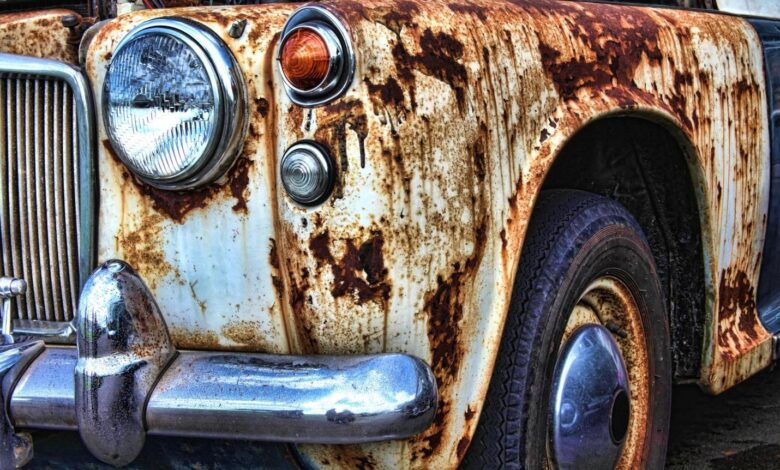
Your Complete Guide to Removing Rust From Your Car Frame – 2024 Guide
Over 1.1 million cars were sold in January 2024 in the USA, adding to the more than 287.3 million registered cars here.
A large number of those new cars replaced are still going strong, but a surprising number are going to the junkyard over very minor defects. One of those defects is rusty frames or bodies.
Removing rust from a car frame really isn’t impossible, and can extend the life and good looks of your car or truck. Especially if you keep up with it from year to year, there’s no reason your car or truck can’t look brand new every year.
Want to know how to save your car from the junkyard and remove rusty scales the right way?
Keep reading for the best and easiest way to remove rust from your car frame.
Can I Prevent Rust From Forming on My Car Frame?
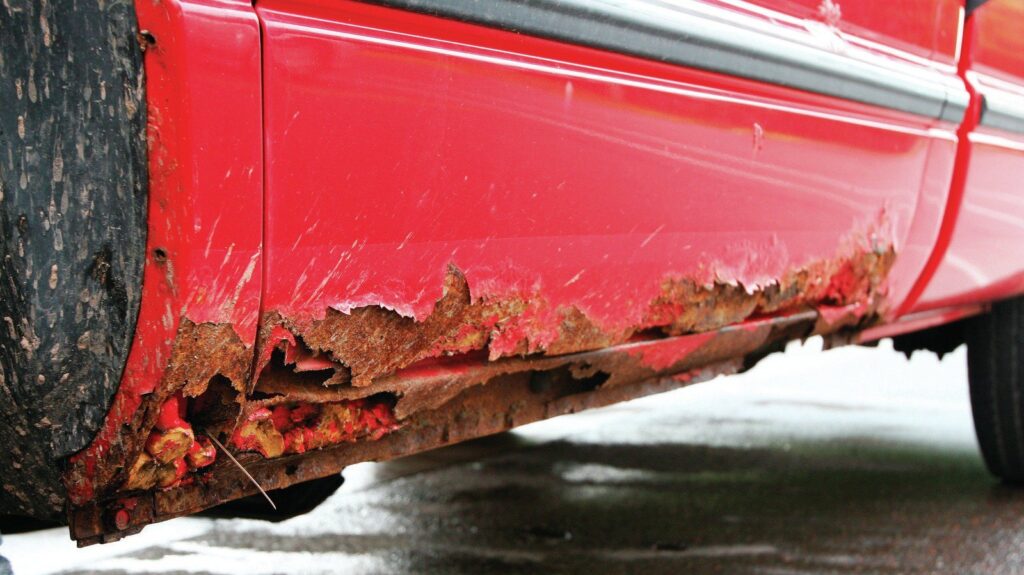
First of all, it would be important to know what rust really is.
“Rust” is oxidized iron. It might surprise you to know that the bluish-grey metal you see so often and we all take for granted doesn’t look like that when it comes out of the ground.
2.5 billion tons of iron ore are processed annually.
Iron is the fourth most common element by mass in the crust of the Earth. However, it composes 90% of all the metal that humans refine. It’s commonly found in alloys of metal, much like in your car.
Iron rust is also why your blood is red. Rust is generally an orange color when we see in on the metal, though.
There are three distinct stages of rust you’ll see on your car.
- Surface rust
- Scale rust
- Penetrating rust
Surface rust just sits on the surface and appears in bumps or nicks in paint and on frames. Scale rust is surface rust that has stuck on long enough to start corroding beyond the exposed surface layer. Penetrating rust is where it has now corroded into the part deep enough to affect its integrity.
For penetrating rust in frames and integral parts or hardware, it needs to be replaced.
Why Do Cars Have Rust?
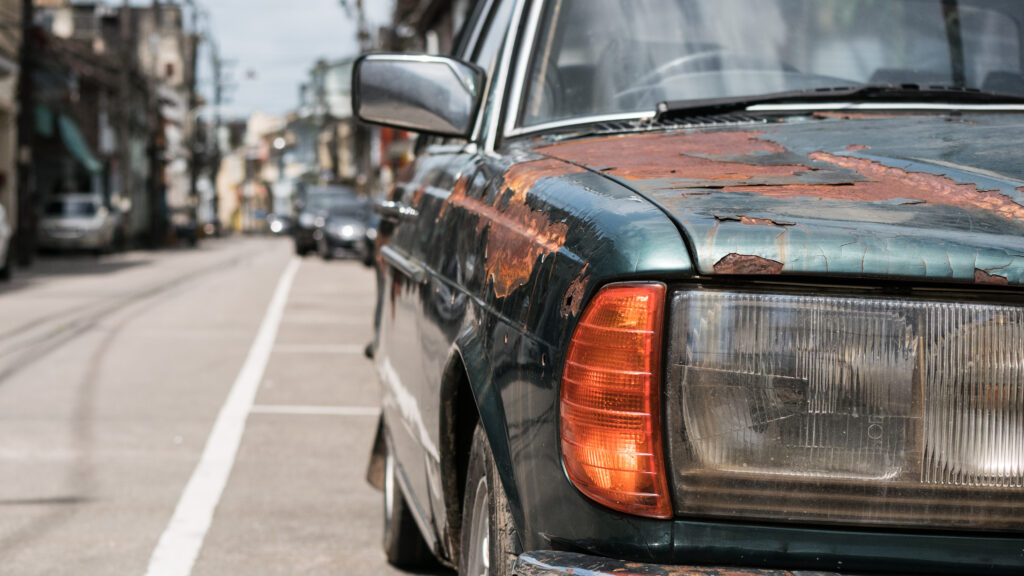
Rust forms with exposure to oxygen which the paint and other coatings on your car help to prevent.
Especially when it comes to the frame of your vehicle, gravel, sand, pebbles, salts, and time wears away at these paints and coatings.
Water itself doesn’t cause rust, it’s the oxidation that occurs in contact with water that can accelerate it. Especially with road salts.
Areas with high humidity and heat, road gritting and salting, and near bodies of water tend to have greater affect on how quickly rust will form. If you were to heat brand new shiny iron until it’s red hot, you’ll notice that it rusts faster. High heat accelerates chemical reactions, including oxidation.
Interestingly, wood burning on fire is also the result of oxidation. You can imagine that iron is burning very very slowly and rust is the ash left behind.
So what can you do to prevent oxidation?
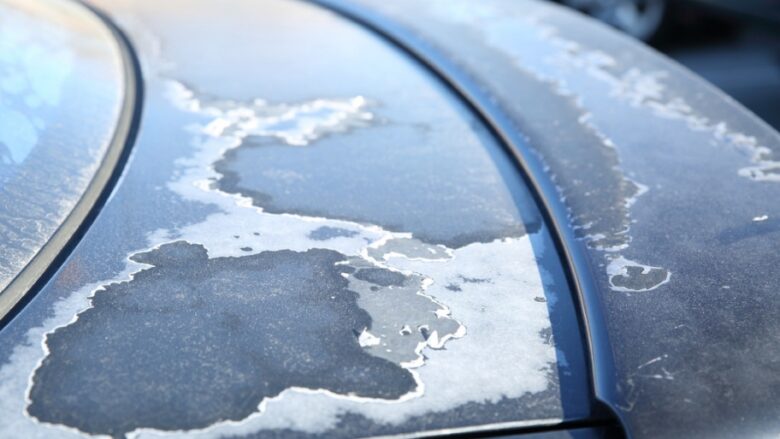
Remove the oxygen. We paint, coat, and protect iron from oxidative substances — air, water, and salts.
The Best Way of Removing Rust From the Car Frame
There are actually many ways of removing rust from cars, involving chemical removal, mechanical removal or a mix of the two. Part of the process depends on how rusted the frame is to begin with.
The places with the highest levels of rust accumulation are usually in the undercarriage.
- Frame rails
- Wheel wells
- Exhausts
- Suspensions
- Bottom of the trunk
- Bottoms of doors
- Dents or nicks
Because accidents and fender benders not only tend to scrape off paint to expose the vulnerable iron in your car, any damaged area will likely have rust accumulation.
Additionally, the areas you would see the most formation of rust will be the creased areas where the metal has deformed the most. This, again, goes back to heat generated during impact, causing the oxygen in the air to react with the iron in your quarterpanel.
Areas exposed to salts and gravel, like the bottoms of doors, the trunk, and the frame get the most day-to-day abuse, however. Especially wheelwells and everything in them, like suspensions, wheelhouses, and control arms tend to get quite rusty.
What You’ll Need to De-Rust Your Frame
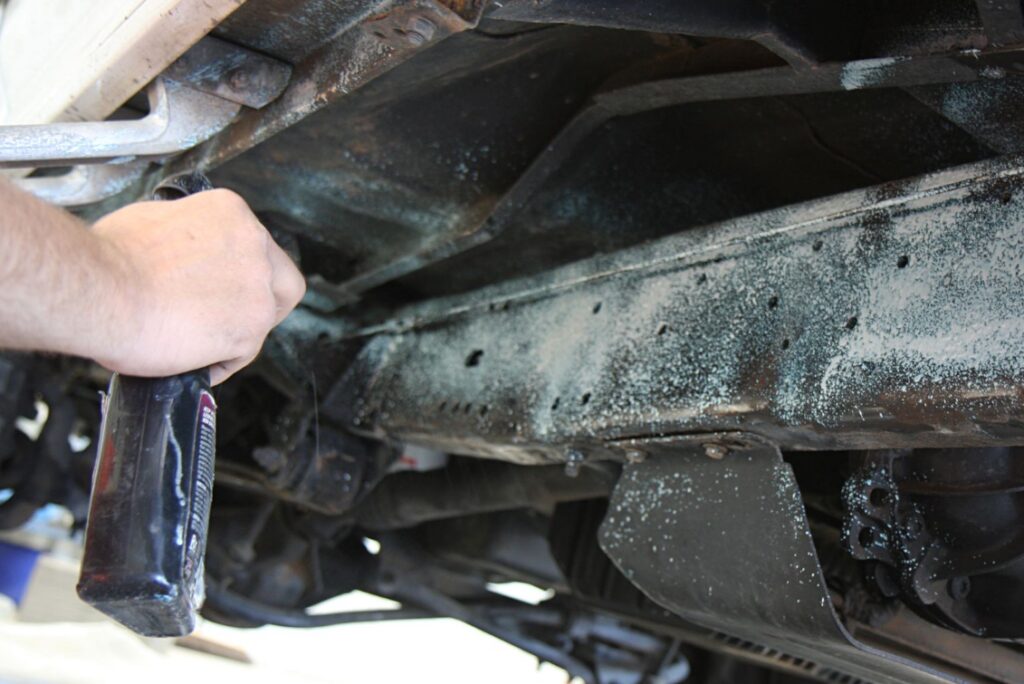
There are a variety of things you’ll need for removing the rust from your frame (and any other part of your vehicle). Some are for removing large scale, baring the metal, cleaning, dissolving, or detail work. We’re warning you, the list can get long.
- Flat metal scraper
- Wooden handle wire brush
- Small hammer
- Rust removal spray (optional)
- Rust converter spray (recommended)
- Sandpaper (80 grit to 320 grit)
- Sanding discs (optional)
- Coarse drill cup wire brush (optional)
- Coast drill end wire brush (optional)
- Power grinder (optional)
- Goggles
- Durable and thick leather workgloves
- Dust mask
- Masking tape
- Masking paper
- Rubber gloves
- Automotive protective enamel spraypaint
Now that we’ve got our list of items, it’s time to start the show.
First off, you’ll have to prepare the vehicle. This is probably a weekend project when it comes to the wheelwells. That includes removing the wheels, keeping track of the hardware and securely propping up your car for each segment you’ll be working on.
In other words, you’ll have to get (safely) under the car to do all of this work. It could be a good idea to break this into two weekends with the front and rear done separately.
You’ll see why in a bit.
Get Ready, Get Set — Descale!
First, let’s address the typical ten steps in order.
- Wash the entire area with automotive soap
- Mask off the work area
- Use the small hammer and scraper to break up heavy scale
- Use the hand wire brush or wire cup on the grinder to remove deeper scale
- Switch to grinding discs or sandpaper until you expose the metal
- Use the finer sandpaper until the rust is almost gone
- Wash with a degreasing agent or soap
- After drying, spray rust converter
- After drying, apply the enamel
- Reassemble the area once dry, removing masking paper and tape
As you can see, you’ll probably need to remove suspensions and other parts to get full access in most vehicles.
As well as the wheelwell lining. Frame rails and other areas of the undercarriage are much easier.
While everything is taken apart, there are optional steps to add. If you don’t like the look of rust on other components, you could try vapor honing to remove surface rust completely. This would ensure the components look as close to new as possible.
If you want to look into vapor honing more portable parts and components,
http://vaporhoningtechnologies.com/ has all the information and equipment you’ll need.
Some Tips on Rust Removal
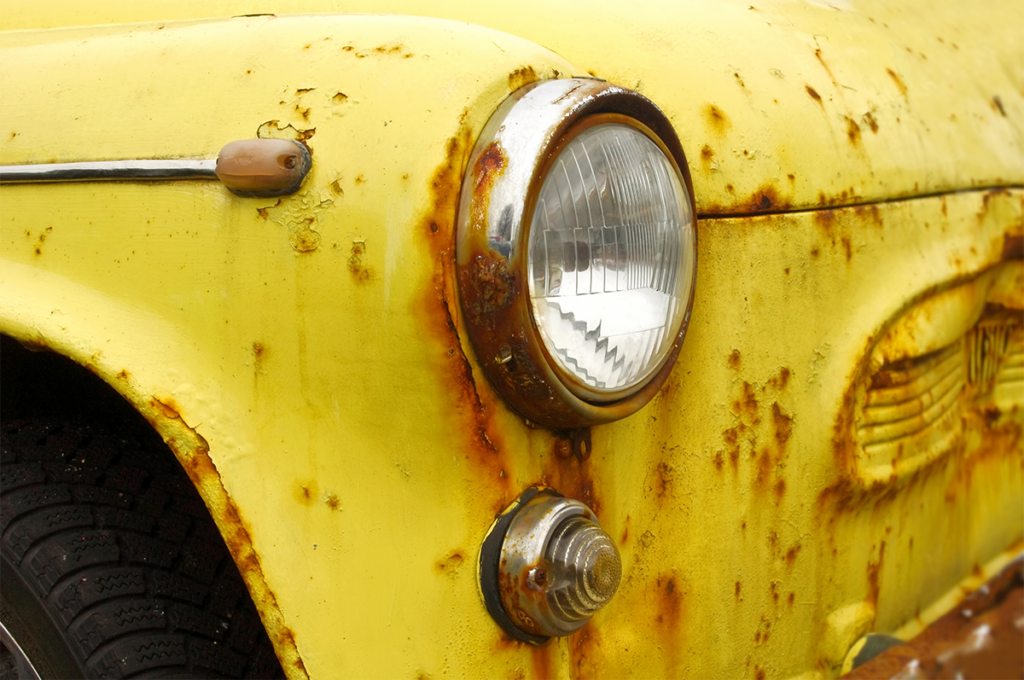
Many of the tools are optional, you may have noticed.
Using a grinder with accessories like grinding discs and wire cup brushes can speed the process up significantly and provide a more even end result. They can also injure you if you’re not careful, or cause significant damage to your frame if you’re inexperienced in using them.
The key is to be gentle and gain a touch for just baring the metal without removing too much. Otherwise, you’ll go through a lot of grinding discs, too. It’s a good idea to watch some tutorials on using grinders for removing rust if you’ve never used a grinder before.
If you don’t have a grinder, it’s probably better (and safer) if you stick to elbow grease and use the wire brush and sandpaper.
Reducing Chemicals in Removing Rust From Your Car Frame
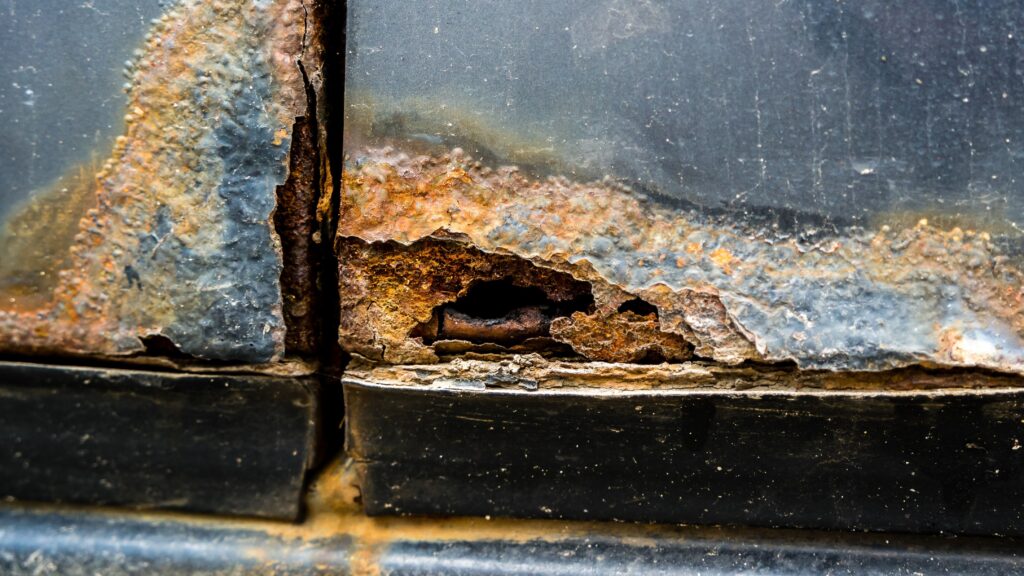
If you would rather go with fewer chemicals, you can stay away from rust removal spray. Once you get to flat metal and the scaling is gone, rust removal spray can be used, but it’s up to you.
It’s less elbow grease, more chemicals, and the time saved is minimal since you have to wait for the chemical to do its job.
Rust converters, on the other hand, chemically change any remaining rust on the surface. There will always be rust forming, even from the very second you stop polishing it. The rust converter not only changes the rust on the surface but includes a copolymer to prepare and protect the surface.
In some cases, you’ll have to paint over it, in others, you can leave it as is until your next rust inspection. To get more information on rust converters of various kinds and how they work, there’s a great study from the National
Center for Preservation Technology and Training.
These guys know how to deal with rust since they work with museum pieces and artifacts.
Either way, once you’ve used the rust converter, you’ll have a perfect barrier for the iron frame. Adding the automotive enamel will help protect the converter and the iron from gravel and other debris.
Not So Rusty After All
Now that you know the best way to remove rust from a car frame, you see that removing rust from a car frame isn’t a lost cause.
Emlii has you covered with the latest news and how-to’s you need for today and beyond. Whether it’s in automotive, gaming, sports, or style, Emlii has the best and latest information to get you where you want to be.
Want to see what else Emlii can do for you? Keep browsing to find out.




